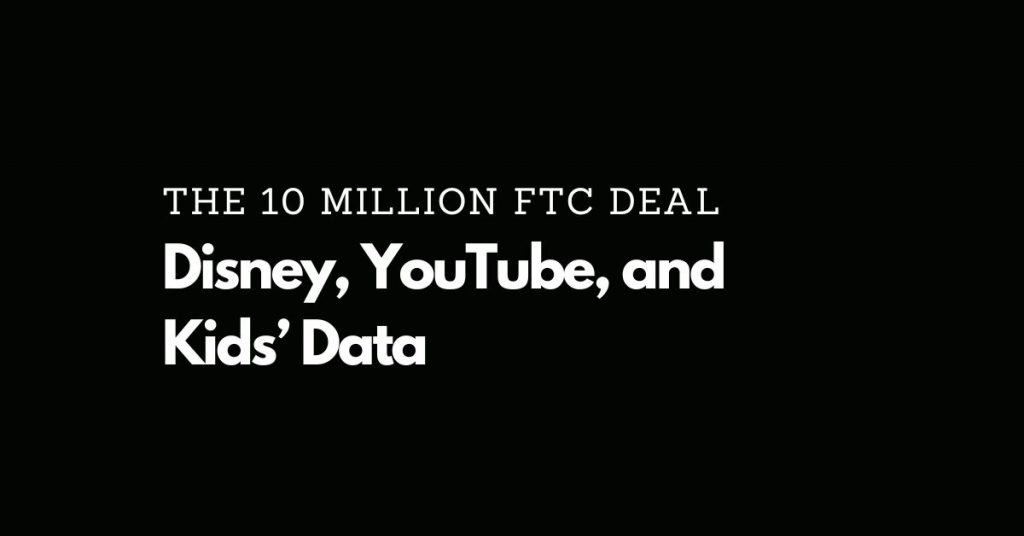Disney’s brand now lives inside YouTube’s kids universe. But that carries legal risk. Days after Disney agreed to a 10 million dollar settlement with the Federal Trade Commission (FTC) over alleged violations of the Children’s Online Privacy Protection Act tied to YouTube data collection, plaintiffs filed a stack of class actions. One seeks to pull the cases into a single proceeding in federal court in New York. The filings claim Disney harvested personal data from children under 13 through kid directed videos on YouTube without parental consent.
What Happened
The Walt Disney Company reached a 10 million dollar settlement with the Federal Trade Commission in early September 2025. The FTC had accused Disney of violating the Children’s Online Privacy Protection Act. The agency said Disney collected personal data from children under 13 on YouTube without verifiable parental consent. The settlement resolved the FTC’s allegations.
Within days of the settlement, at least five class action lawsuits were filed against Disney. The complaints accuse Disney of unlawfully gathering personal information from children through kid directed video content on YouTube. The filings assert that Disney’s conduct violated COPPA and state privacy and consumer protection laws. The suits seek relief on behalf of parents and children who viewed Disney content on YouTube.
One plaintiff has petitioned to consolidate the cases in the United States District Court for the Southern District of New York. The petition asks for multidistrict litigation treatment so a single judge can manage pretrial proceedings. The goal is to coordinate discovery and legal rulings across the overlapping class actions. That consolidation push and the early count of five suits were detailed by Law.com in its overview of the litigation wave.
Attorneys involved in the new litigation said streaming companies that produce children’s shows must comply with online privacy laws as more children use internet connected devices. The complaints focus on YouTube distribution rather than Disney’s owned apps. They argue that kid directed content on a third party platform still triggers COPPA duties, including parental consent before data collection.
Coverage also points to how content labeling on YouTube contributed to the alleged violations. Reports say Disney uploaded more than one thousand two hundred fifty videos across multiple channels without tagging them as made for kids. Those settings allowed targeted ads and generated more than 350000 ad impressions on kid directed videos, according to the Los Angeles Times.
The Stakes for Families
This case moves responsibility from only the platform to the publisher. That shift matters at home because your child can watch an official studio channel on regular YouTube and still trigger data collection if the creator mislabels a video or relies on unsafe defaults. COPPA treats persistent identifiers as personal data. That includes cookies, device IDs, and advertising IDs tied to a viewer. Those identifiers feed ad systems and can attach to household profiles that already track adults in the same home. A settlement and new lawsuits will not pull that data back. The lesson here: platform badges and brand trust do not guarantee that kids directed videos run with the protections you expect.
The claims also show how little data it takes to map a child’s viewing habits. The filings and coverage describe ad impressions on kid directed videos and the collection of personal information without parental consent. The information at stake is not a name. It is the browsing record, timestamps, device identifiers, and the pattern of what the child watched. That mix links to interests, location patterns, and purchasing signals inside ad networks. Once that link exists, it travels with the device and can influence what the rest of the family sees across apps and sites. Parents who care about data control should treat kids viewing on the main YouTube app as a source of long lived tracking unless creators and platforms enforce strict kids settings.
Expect more age gates and friction next. The settlement coverage describes required review programs and notices, and industry voices point to age assurance as the next control. Age checks reduce risk, but they add their own privacy costs. Services can push phone number checks, face estimation, or document verification to prove age. That creates new records and new ways to identify a household. Families will face a tradeoff between fewer trackers around kids content and more verification across accounts and devices. If studios and platforms expand age checks after these suits, parents should anticipate more prompts, stricter audience tags, and less personalization on family devices.
This enforcement wave will not stop with one brand. It is the first known COPPA settlement against a YouTube content provider since the 2019 Google and YouTube case, and it already triggered private class actions. Other channels that publish kid directed shows on YouTube will study this and change tactics. Some will lock down tagging and ads. Some will move premieres to owned apps. Some will delay uploads until legal teams sign off. For families, that means visible changes in how kids content behaves on YouTube. Autoplay may turn off more often. Fewer targeted ads may appear, but new consent prompts may show up. The bigger point is practical. The safeguards your child sees depend on how a creator labels and distributes each video, not only on YouTube’s global settings.
TENMostSecure Recommendations
You control how much data YouTube and its ad partners can attach to your child’s viewing. Make a few immediate changes that cut tracking, separate identities, and keep kids inside safer lanes.
- Use YouTube Kids or a supervised YouTube account. Set up a child account in Family Link and pick YouTube Kids or the supervised YouTube experience. Then disable search and set screen time. Install the Kids app on every device your child uses, including smart TVs, and avoid the main YouTube app for their profile.
- Separate profiles and turn off autoplay. Create a child user on Android or Google TV and a separate Chrome profile on computers, and stay logged out of your adult Google account on the kid device. In YouTube settings turn off Autoplay to reduce hops into mislabeled or general audience videos.
- Kill ad personalization and reset device IDs. Visit adssettings.google.com for the account used on the kid device and turn off Ad Personalization, then repeat on any adult account still signed in on that device. On Android go to Settings then Privacy then Ads and delete the Advertising ID, and on iPhone go to Settings then Privacy and Security then Apple Advertising and turn off Personalized Ads.
- Pause and clear history that powers profiles. In the YouTube app open Settings then History and privacy, pause Watch history and Search history, then clear both for the kid profile. In the Google account set Web and App Activity to off for that child account and review these switches monthly.
- Add a network level safety net. Use a family DNS filter that enforces YouTube Restricted Mode and blocks common trackers, and apply it on the child device or your home router. Keep a backup option for younger kids by favoring streaming apps or services that show no behavioral ads for their shows.
Courts will argue about liability for months. Your setup can change tonight. Treat the main YouTube app as tracked unless you lock it down, and keep kids in guarded spaces with separate profiles, history paused, and ad personalization off. Expect more age checks and consent prompts to appear across family apps. Decide now how your household will handle verification so you do not hand over extra data under pressure. Put a calendar reminder to review these settings every quarter and adjust DNS filtering or app choices if a device update loosens them. Small, specific changes lower the data your child emits and cut how far that data travels across your household.

